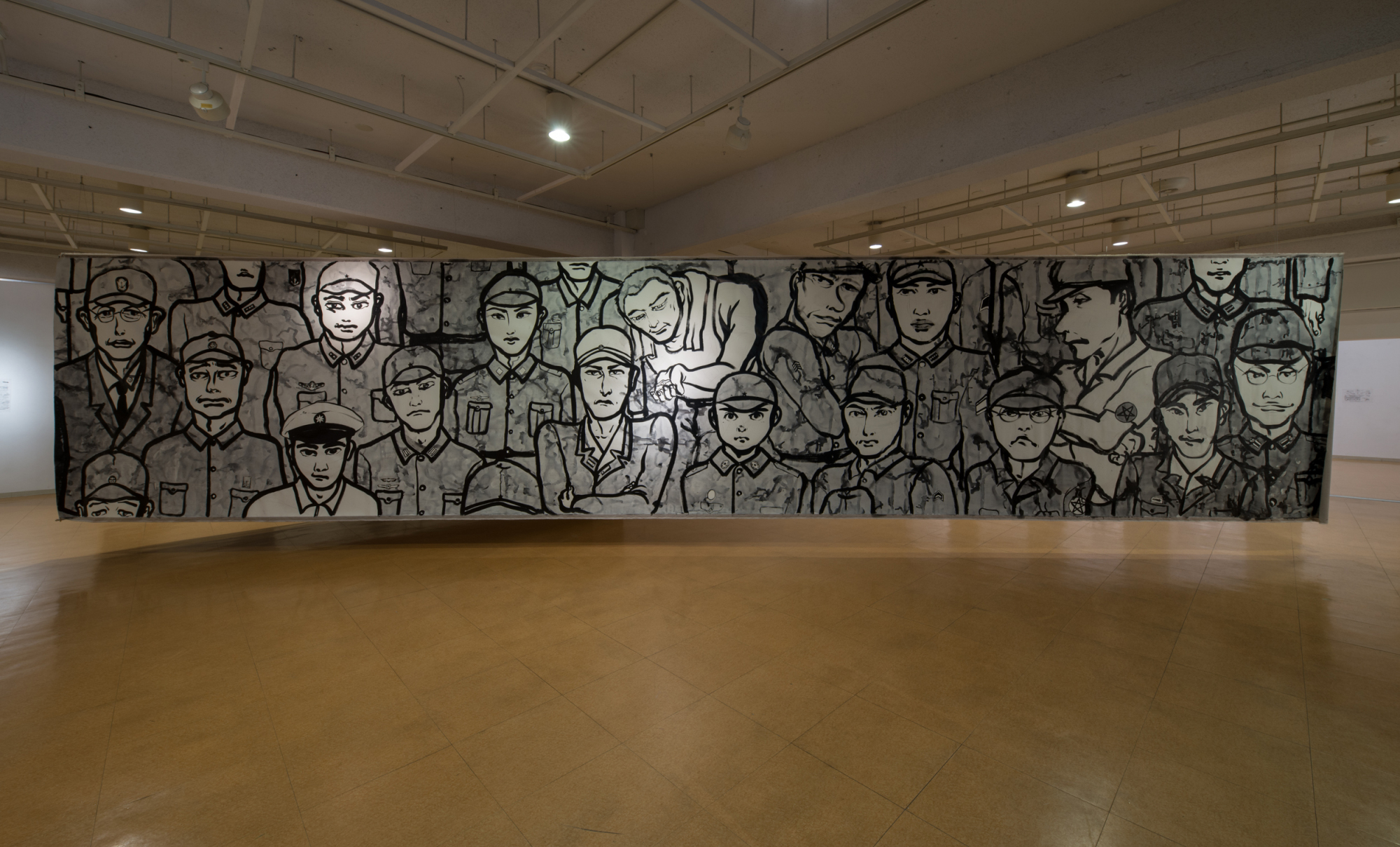Some artists from earlier generations like Tsuguharu Foujita (also known as Leonard Foujita) have been "outed" in the past decade or two and are now almost celebrated for producing incredibly complex propaganda paintings complicit with Japan's World War II ideology. For others, however, such politics remain off-limits. Latter-day artist retrospectives can be full of blank spots between the late 1930s through to 1945.
Yasuka Goto, born in Hiroshima in 1982, grew up hearing stories of the war experiences of her grandfather and a great-uncle, who starved to death during WWII. Her current solo exhibition at Kyoto Seika University's Gallery Fleur, "The Patch of Despair," stitches together the personal, addressed initially through her family history, with the political, through her explorations of some of Japan's prominent WWII painters.
Between 1943 and '44, the Japanese military banned metal insignia, owing to material shortages, and shifted its production of military badges to Kyoto's Nishijin textile industry, traditionally known for its luxury kimono. The new mass-produced embroidered insignia — which denoted rank, affiliation and schools of training or graduation — were dispatched nationwide with an output in the millions. Following preparatory research, interviews and surveys, on display at the exhibition Goto's paintings use these insignia as a reference point of her paintings.



















With your current subscription plan you can comment on stories. However, before writing your first comment, please create a display name in the Profile section of your subscriber account page.